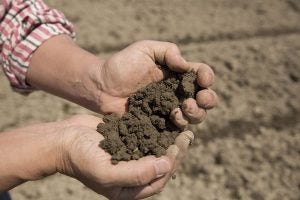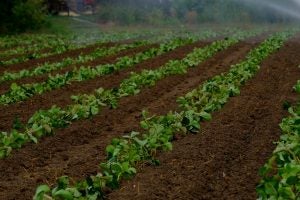Soil health tests are not the same as soil tests, but the question is which do you need for your farm?
Soil tests are a perennial staple for any farm manager. But with industry talk drifting more towards soil health, should this be your new metric? Soil health testing has changed — today’s methodology seeks to quantify what used to be anecdotal observations. So, this season, do you need a soil test or a soil health test?
What they represent
A soil test is the traditional and well-established analysis of soil chemistry. At a glance, you can quickly see your plot’s macro and micronutrient levels and pH value, and possibly more. Your results are a snapshot designed to provide this-season recommendations and are thus a leading indicator of crop productivity. They advise what to do in the future to optimize crop performance.
Soil health tests are a newer, less common assessment. These tests evaluate the physical and biological status of your soil and its ability to support healthy crops (in addition to chemical values).
While traditional testing is prescriptive, soil health tests are generally for restorative evaluation. They monitor long-term soil response to your farm management practices. So they are a rearview look at your soil’s performance. As such, they are a lagging indicator. They reflect your soil’s status based on past practices.

What they measure
At a minimum, traditional soil tests measure soil pH, phosphorus, potassium, and micronutrient levels. They also provide recommendations for nutrient application rates. Depending on your lab, you may also be able to request additional services for salt/sodium, heavy metal, and other testing, like nematodes.
Soil health tests vary depending on which indicators are assessed. But the leading models (the Natural Resources Conservation Service’s Soil Quality Evaluation and the Cornell Comprehensive Assessment of Soil Health-CASH) include numerous indicators:
- Chemical
- Soil pH
- Electrical conductivity (salt)
- Phosphorus, potassium, micronutrient levels
- Physical
- aggregate stability
- available water capacity/ infiltration
- surface/subsurface hardness
- soil texture/density
- Biological measurements
- Soil organic matter/protein
- Total/active carbon content
- Total nitrogen/nitrates
- Soil life (earthworms), respiration
How you’ll use the results
Traditional soil chemistry tests will impact your decisions for this year’s inputs on a specific crop (e.g. how much nitrogen do I need to add to this corn field for 2021?). These tests provide tried-and-true information and are highly valued for directing decisions affecting yield and crop quality.
Soil health test results would more likely affect your management decisions including cover crop use/choice, crop rotation, tillage plans, and organic amendments. These strategies aim to support your soil’s natural ability to cycle nutrients and increase plant resiliency.

So which should you use?
As with everything, it depends. First, consider your current farm management approach — conventional, organic, no-till, low-till, etc. But also factor in your attitude toward new practices as well as any existing system constraints (equipment, scalability).
What’s your horizon? If your outlook is on the immediate season, the tried and true choice is probably obvious. But if you are rethinking management strategies because of economic or environmental pressures, you might be looking further down the road and choose differently.
Finally consider your crop, farm size, location, and production intensity. Many of the potential recommendations from soil health tests are highly valued among organic producers, specialty crop growers, and small-scale producers on land-locked acreage.
Where to find traditional testing
Hopefully, you are well-acquainted with your state’s Extension soil lab for traditional soil chemistry testing. If you need additional options, the Soil Science Society of America provides a searchable database of soil testing labs. Need alternative metrics? ATTRA, whose focus is on sustainable agriculture, offers a helpful database of labs offering recommendations for organic and small-scale growers, among other specialties.

Looking for soil health tests?
The NRCS offers an exhaustive assessment of 12 on-farm tests in their Soil Quality Test Kit. It includes a rich interpretive guide but doesn’t recommend tactical changes. It is useful in monitoring soil trends over time, comparing management styles, or troubleshooting. Given the detail, consider consulting a local NRCS representative for help.
Cornell University provides its CASH guide and offers paid soil health testing in three levels of detail. The lab service provides easy-to-read and color-coded graphics and includes short and long-term management recommendations.
Cornell’s soil health sampling procedures are different from traditional soil tests and should be followed carefully. Also be sure to note special cases for prohibited, regulated, and quarantined soils.
A variety of private labs also offer a diverse range of soil health analyses. Give good old Google a search with “soil health testing labs” and you’ll find several options. Your mileage may vary.
Evolving soil research and public interest in soil health have expanded the boundaries on soil testing services. Decide which option is right for your farm (or possibly try both!) and know that you are stewarding your crops and soil for long-term productivity.
Jennifer Howard is a small farm owner and agricultural writer from the heart of North Carolina. She is a soil-first advocate, closet flower farmer, and lover of pollinators. Find her on LinkedIn @agwriterjenniferhoward.



